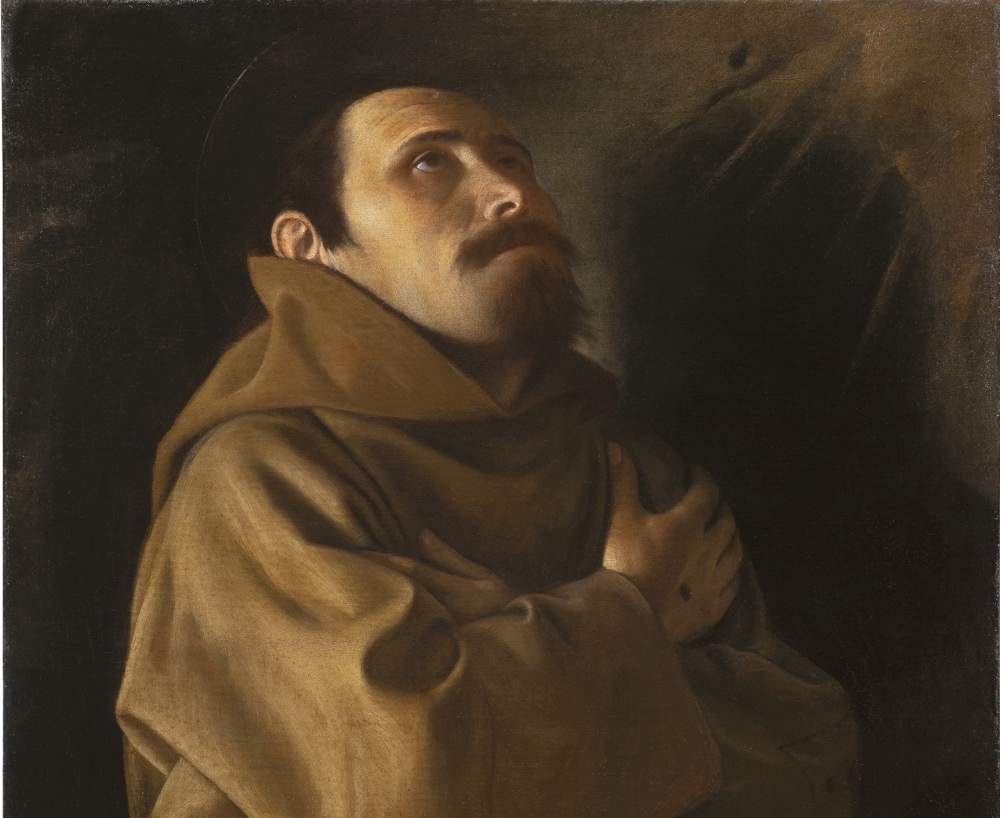Orazio Gentileschi and the birth of Caravaggism in Rome. An exhibition on the subject at Palazzo Barberini
The National Galleries of Ancient Art at Palazzo Barberini present from January 27 to April 10, 2023, the exhibition Orazio Gentileschi and the Image of Saint Francis. The Birth of Caravaggism in Rome, curated by Giuseppe Porzio, professor of modern art history at the University of Naples L’Orientale, and Yuri Primarosa, museum curator and adjunct professor of modern art history at Sapienza University of Rome.
In room No. 9 on the ground floor, designated for dossier exhibitions with in-depth studies of individual works or specific themes, a painting by Orazio Gentileschi depicting St. Francis in Ecstasy, notified by the Italian state on the advice of Yuri Primarosa as a work of exceptional historical-artistic importance, will be exhibited for the first time.
The painting constitutes a rare and relevant testimony to the moment when Orazio Gentileschi approached the poetic and stylistic innovations elaborated by Caravaggio. It was in fact executed from nature and with the model posed-a working method that Orazio must have learned already around 1599-1600 directly from the latter. In all likelihood the picture was painted in the same years as the famous trial that Giovanni Baglione had brought against Caravaggio, Onorio Longhi, Filippo Trisegni, and Gentileschi himself; during the trial, and to be precise in September 1603, Gentileschi had declared that he had lent Caravaggio “a capuchin’s robe” and a “par d’ale.” This is plausibly the same habit, distinguished by a peculiar pointed headdress, that Orazio portrayed in the work exhibited here.
Gentileschi’s unpublished painting is compared with three important works housed in the Palazzo Barberini and with a painting from the Prado Museum: the Saint Francis in Meditation attributed to Caravaggio, the Saint Francis supported by an angel by Gentileschi himself, the Saint Francis at Prayer by Cigoli, and the Saint Francis supported by an angel from Madrid, another masterpiece from Gentileschi’s early phase.
Thanks to this discovery, it will be possible to document in a new way the birth of Caravaggism in Rome through the early influence aroused by Merisi on Gentileschi, who had already been active in the papal capital for more than two decades in the wake of the late Mannerist movement.
The unpublished St. Francis, highly experimental in its rendering of a vivid and expressive naturalism, will also be exhibited alongside a number of evocative objects, such as the 1603 trial proceedings opened on the page of Caravaggio’s aforementioned deposition, a coeval Capuchin habit and a photograph by Massimo Listri of the crypt of the Capuchin friars in Via Veneto in Rome, made for the occasion.
Indeed, in the new interpretation of the image of St. Francis, it was fundamental for Caravaggesque artists to be familiar with certain prayer practices that were widespread at the time, such as the vigils performed by Capuchins before the remains of their brethren: vivid evidence of the austerity of a rule consecrated to the elevation of the soul and the rejection of vanities, masterfully celebrated by Caravaggio and Gentileschi.
The exhibition was made possible thanks to the support of Galleria Benappi Fine Art, which also provided the restoration of the canvas, carried out by Stefano Scarpelli under the supervision of the National Galleries.
Accompanying the exhibition is the catalog published by Officina Libraria, which contains essays by the curators and texts by Keith Christiansen (former director of the Department of European Paintings at the Metropolitan Museum of Art in New York), Alessandro Zuccari and Massimo Moretti (professors of History of Modern Art, Sapienza University of Rome), Ilaria Sgarbozza (Soprintendenza Speciale di Roma) and Claudio Sagliocco (doctoral student in History of Art, Sapienza University of Rome).
For info: www.barberinicorsini.org
Image: Orazio Gentileschi, Saint Francis in Ecstasy, detail (c. 1602-1605; oil on canvas, 98 x 73 cm; private collection). Inscriptions: on the back of the canvas “S. and P.S. n. o 10.” Courtesy of Benappi Fine Art.
 |
| Orazio Gentileschi and the birth of Caravaggism in Rome. An exhibition on the subject at Palazzo Barberini |
Warning: the translation into English of the original Italian article was created using automatic tools. We undertake to review all articles, but we do not guarantee the total absence of inaccuracies in the translation due to the program. You can find the original by clicking on the ITA button. If you find any mistake,please contact us.



























